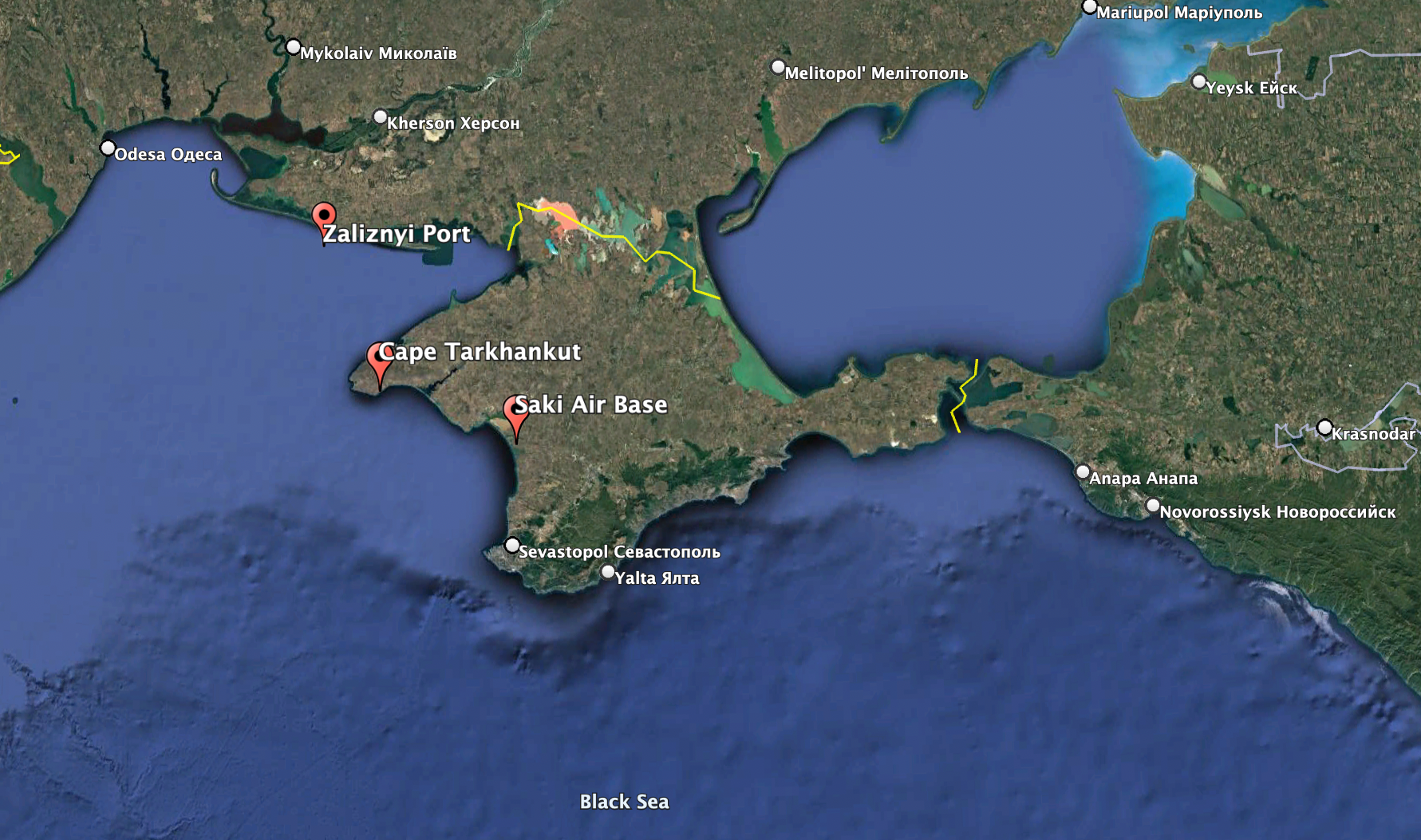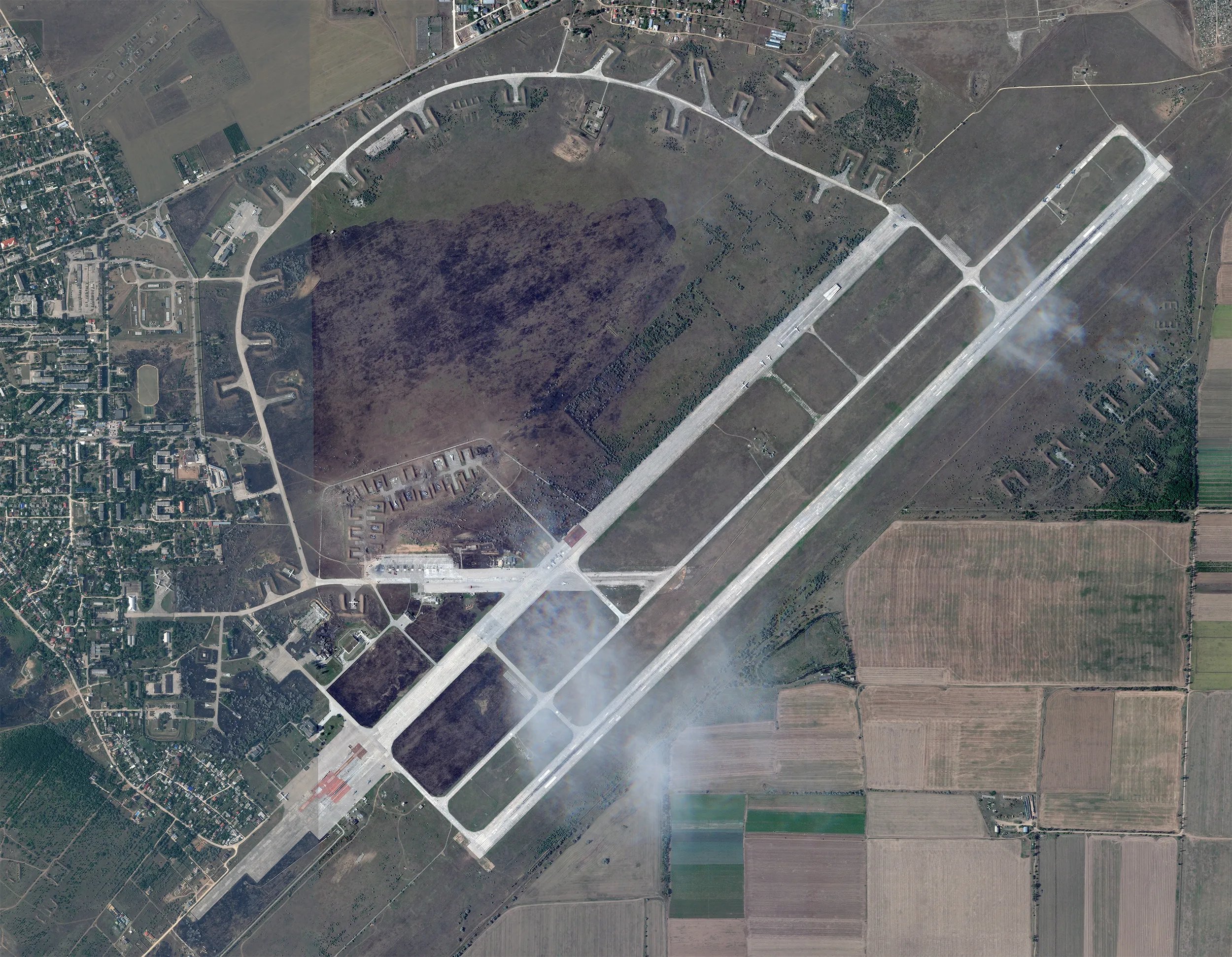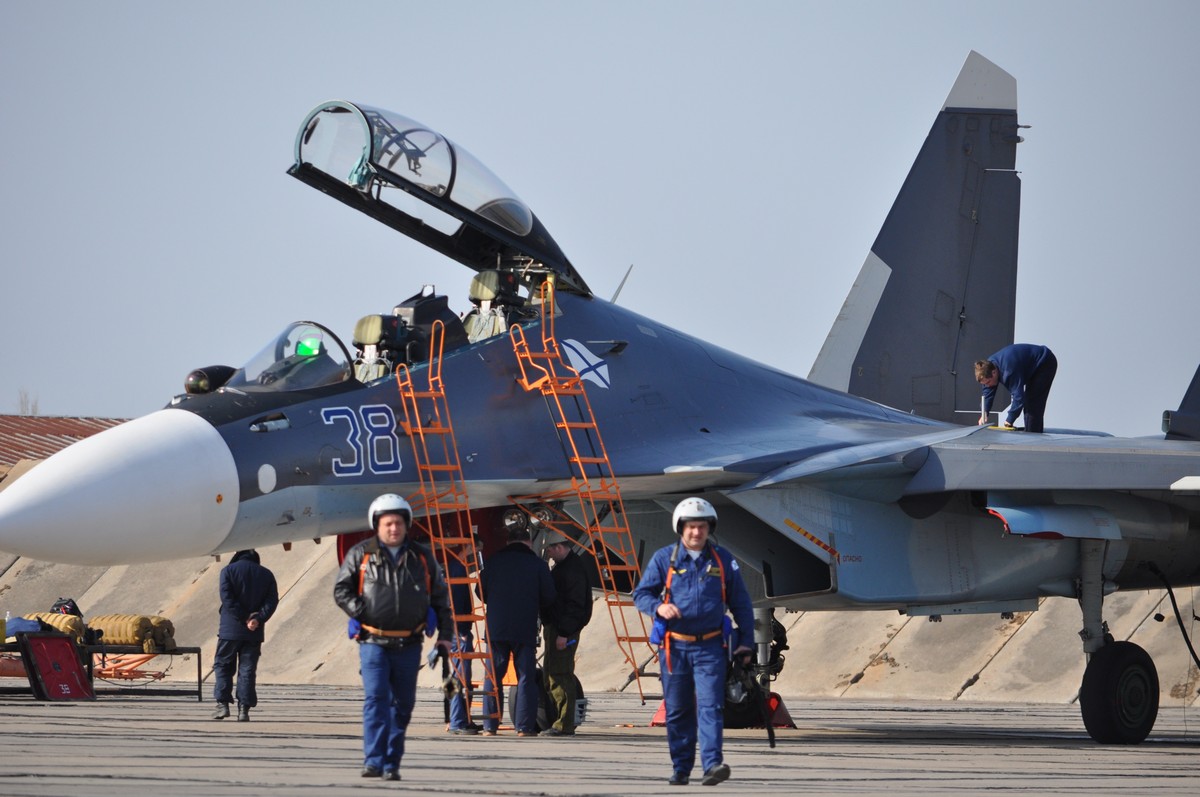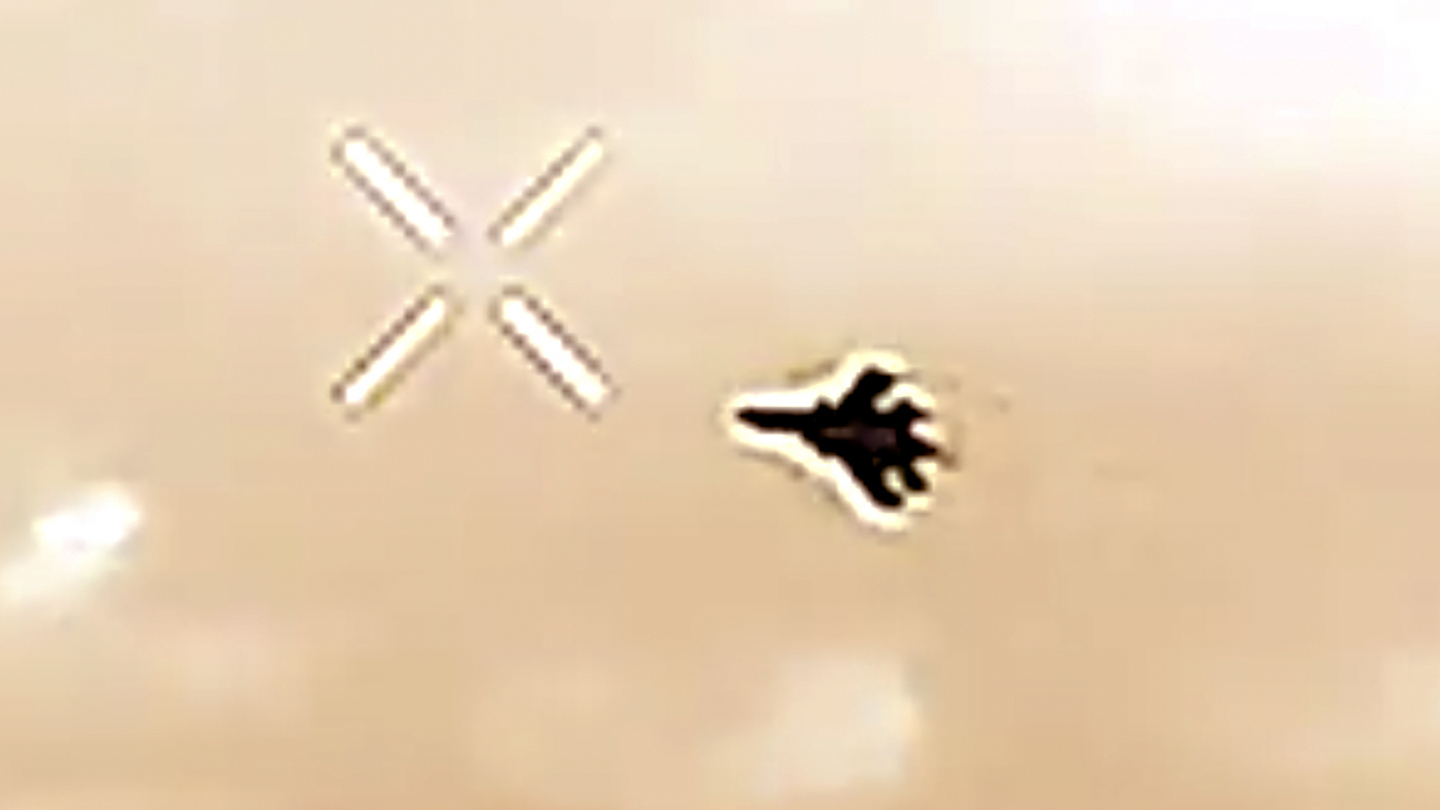The Ukrainian Ministry of Defense has published a video that it claims shows the destruction of a Russian Su-30SM Flanker multirole fighter, which it says was brought down by a shoulder-launched surface-to-air missile over the Black Sea. The engagement appears to be part of the latest round in the battle to control oil and gas platforms close to Russian-occupied Crimea and reinforces the tactical advantage that these can provide.
Ukrainian reports suggest that the Su-30SM — operated by Russian Naval Aviation — was brought down while attempting to attack an oil platform in the Black Sea yesterday. The successful shot, using an undisclosed type of man-portable air defense system, is said to have been taken by Ukrainian special forces from Ukraine’s Defense Intelligence Directorate, or GUR. Other unconfirmed reports suggest the missile was fired from a boat belonging to the GUR while it was raiding a Russian-held platform in the Black Sea. The video doesn’t provide concrete evidence of a missile shot downing the jet, as far as we can tell.
The pro-Russian Rybar channel on Telegram suggests claims that the Flanker may have been brought down during what it says was a Ukrainian attempt to capture the Krym-2 oil platform. In response to this mission, Rybar says that Russian aircraft were sent to the area, where one then fell to a man-portable air defense system.
While the Ukrainian Ministry of Defense has made many claims of Russian aircraft — as well as drones and missiles — being brought down by its air defenses, videos of such incidents are rare. It’s more unusual still for them to be shared on official channels by the ministry.
In this instance, however, a Ukrainian surveillance drone operating in the vicinity of the engagement recorded some of the last moments of the two-seat Russian fighter. Unconfirmed reports suggest that the drone used to monitor the engagement was a Turkish-made Bayraktar TB2, a type widely used in the opening months of the conflict but much less frequently encountered since then, although they have been active over the northwestern Black Sea throughout the conflict.
Creedence to the Ukrainian claims is given by accounts on unofficial Russian channels, including some closely associated with the Russian Armed Forces, which also confirm that a Su-30SM was lost on a combat mission in this area at the same time.
Further claims about exactly what happened are provided on the Telegram messaging app by the Ukrainian Monitor channel, which reported that a Su-30SM “disappeared” over the Black Sea at around 11:40 p.m. on September 10. The same source says the fighter had just launched one or more Kh-31P (AS-17 Krypton) anti-radiation missiles when it went missing. The missiles were apparently directed against (presumably air defense) targets “in the Odesa region.”

The Ukrainian Militarnyi defense website says that the Su-30SM had “fired four missiles out of six available, after which it disappeared from the radar screen.”
Monitor claims that Russian search and rescue operations were underway as of yesterday, at the site of the fighter’s disappearance — around 40 miles from the port of Zaliznyi. This account says there is no information about the fate of the two crew members.
According to the account from the GUR, the Russians lost contact with the Flanker at around 5:00 a.m. on September 11, several hours later than claimed in some other reports. The GUR says a Russian search and rescue operation was launched around 8:00 a.m. yesterday, involving an An-26 twin-turboprop transport, as well as Mi-8 and Ka-27 helicopters.

This led to the Russians reportedly locating “a characteristic stain of aviation fuel in the sea,” around 45 miles northwest of Cape Tarkhankut, and also soon found the wreckage of the destroyed Su-30SM.
The GUR says the aircraft in question was operated by the 43rd Independent Naval Assault Aviation Regiment of the Russian Naval Aviation. The unit’s Su-30SMs are home-based at Saki, on the Russian-occupied Crimea peninsula and they came to prominence during several encounters with NATO forces in the Black Sea in 2021.
Saki has previously come under Ukrainian attack, which may have forced at least some of its aircraft to be redeployed to safer airfields. In August 2022, for example, satellite imagery revealed that at least 10 jets were seriously damaged or destroyed by Ukrainian attacks on Saki.

The Militarnyi website says the fighter that was shot down was operating from the air base at Krymsk, in Russia’s southwestern Krasnodar Krai, directly adjacent to occupied Crimea. This base already accommodates Russian Aerospace Forces Su-30SMs, and a temporary combat deployment by Russian Navy aircraft is a possibility.
According to the Oryx open-source tracking group, prior to this latest incident, the Russian military had suffered 11 Su-30SMs destroyed or damaged beyond economical repair. Since this number is based on losses that can be verified based on publicly available imagery, the actual total is very likely higher.
Regardless, the loss of a Su-30SM — the most modern combat type in the Russian Naval Aviation inventory — is significant, with a value of around $50 million, according to the GUR.

While it’s not entirely clear if the shootdown was the result of a carefully planned operation or was a more opportunistic engagement, it reinforces the fact that Russian military aircraft operating over the Black Sea are vulnerable to man-portable air defense systems as well as longer-range surface-to-air missiles and may also prompt a change of tactics.
Otherwise, the incident reflects the ongoing battle for control of the Black Sea oil platforms, which have been fiercely fought over since the start of Russia’s full-scale invasion, with the GUR being especially active.
Before Russia seized the Crimea peninsula, the Black Sea shelf provided Ukraine with a large part of its natural gas.
The annexation of Crimea in 2014 led to the offshore drilling platforms being occupied by Russia and they were used for military purposes after full-scale invasion, including for surveillance, communications, and air defense.
By September last year, however, Ukrainian forces — spearheaded by the GUR — had regained control of several of the oil and gas platforms close to Crimea. These platforms can also be useful operational nodes for the Ukrainian military, including helping to exert control further out into the Black Sea.
Russian air power has been used regularly in this campaign, with mixed results. Among its frequent targets have been Ukrainian special forces boats operating between the platforms and the mainland. On at least one occasion, Ukrainian troops apparently fought off an attack by another Su-30SM, with some reports suggesting the fighter received damage when they fired upon it.
For Ukraine, control of the platforms is not only of military significance but also highly symbolic, bearing in mind its longer-term aim of regaining Crimea. Part of this effort has been the successful campaign to deprive the Russian Black Sea Fleet of its ability to fully control the Black Sea.
With the Black Sea region still very much a key flashpoint in the conflict, Russian air activity is likely to remain a feature of the fighting. However, the loss of a Su-30SM is a reminder to Moscow that Ukraine poses a threat to its operations in the air over the Black Sea as well.
Contact the author: thomas@thewarzone.com
